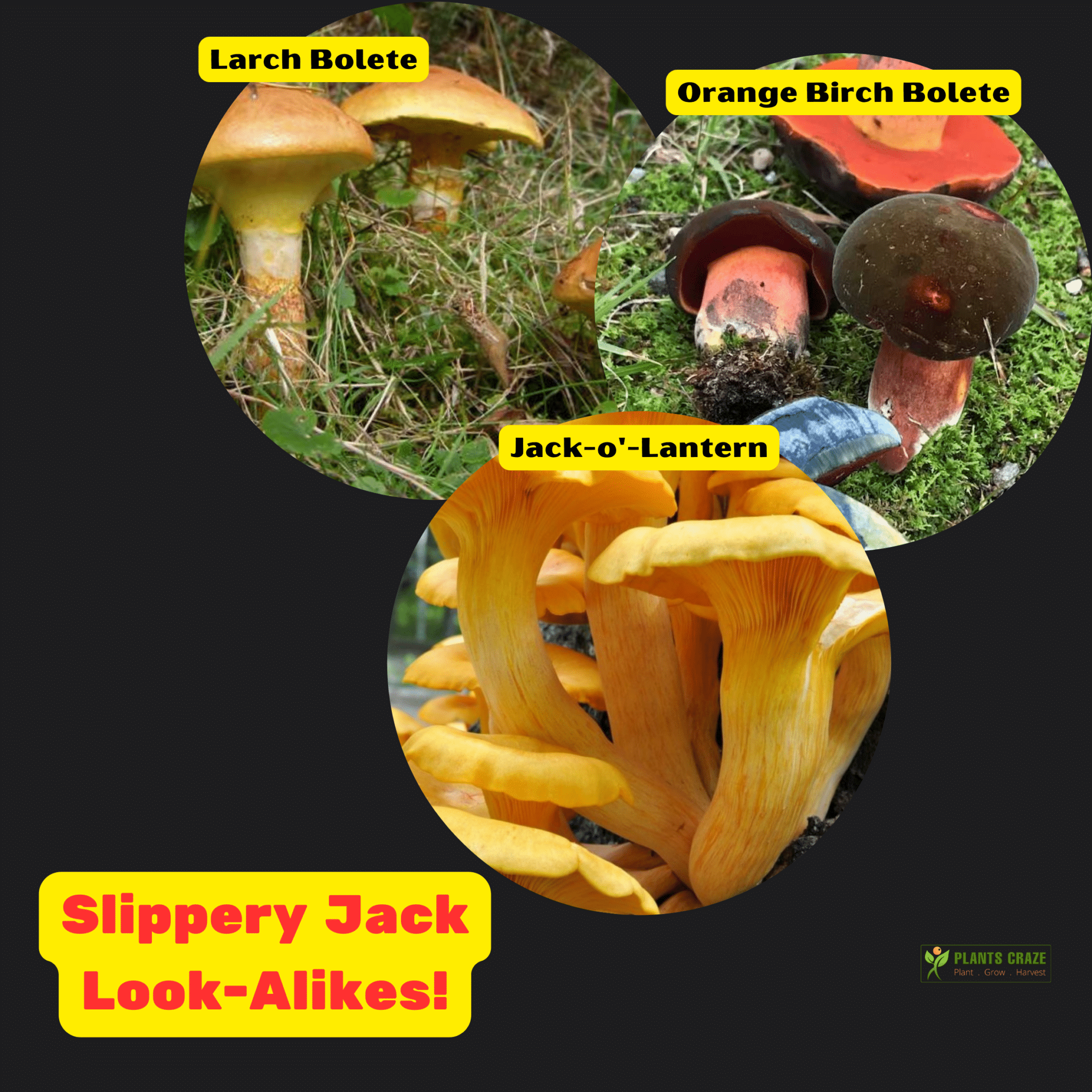Do you know the edible Slippery Jack Mushroom also has deadly look alikes?
Follow the article if you want a sweeping guide to identify the correct Slippery Jacks!
Table of Contents Show
Slippery Jack Mushroom [Key Characteristics]
Suillus luteus, or Slippery Jack Mushroom, belongs to the Mushroom family Suillaceae.
Slippery Jack Mushroom bears a slippery or slimy rusty reddish-brown puffy bunny cap, hence its name.
Do You Know?
Some people find the slimy layer on the top of the Slippery Jack Mushroom unpleasant as they pose allergic skin reactions on contact.
This fungus is native to the Coniferous Pine Forest of the Northern Hemisphere, where it forms symbiotic relationships with the Pine tree roots.

However, they can grow alongside Cedar, Fir, and Spruce trees and prefer areas with high rainfall, with well-draining sandy soil.
Slippery Jack Mushrooms are edible, having a buttery texture and nutty taste.
But Mushroom foragers describe them as low-quality fungus for eating as you need to wash or peel off the upper slimy layer.
Main Features of Slippery Jack Mushrooms
Other than a slimy cap, Slippery Jack Mushrooms sport several distinguishable features.
- The base of their caps has tightly packed yellow pores instead of the typical ‘gills.’
- The stipe or stem is yellowish-white or pale white with small brown granular spots.
- Further, a distinct floppy ring or ‘annulus’ surrounds the stem or stipe.
- They preferably grow in clusters around or near the roots of Pine trees in Coniferous forests.
Why Is It Important To Identify Slippery Jack Look-Alikes?
Although Slippery Jacks have a distinctive glance, they look like many Bolete Mushrooms.
Boletes contain edible and poisonous Mushrooms, the most famous being the Porcini or King Bolete (Boletus edulis), a culinary delicacy.
However, Boletus rubroflammeus are poisonous with dark-red wine-colored caps and gills.
Further, the fungal order, Boletales, under which the Boletus and Suillus genera come, has around 100-300 species.

Also, many genera are not edible and can be fatal for human and animal consumption, resulting in poisoning.
Some critical differences between Slippery Jack Mushroom and their look-alikes are as follows.
- Poisonous Slippery Jack look-alikes have yellow, orange, or red stems or stipes.
- Further, the pores of poisonous Slippery Jack look-alikes have light yellow, orange, or red pores or cap bases.
- Also, the caps of toxic Slipper Jack look-alikes have dry caps instead of a slimy ones.
But, if you are unsure about the identity of the toxic Mushrooms, then it’s always better to avoid them.
Instead, take help from a Mushroom expert, foraging guides, and trusty websites.
Mushrooms That Look Like Slippery Jacks
Before you get into Mushroom foraging, look at some of the poisonous Slippery Jack Mushroom look-alikes from the list below.
1. Jack-o’-Lantern Mushroom
Jack-o’-Lantern (Omphalotus olearius) has a slimy and dark-orange to orange-yellow cap.
They appear in clusters but arise from a common base.
2. The False Slippery Jack/ Larch Bolete
Larch Boletes (Suillus grevillei) have more pointy caps that are cone-shaped than a hamburger bun, as in True Slippery Jacks.
The top of the caps are light brownish yellow, with a creamy white collar at the junction connecting the stipe and the cap.
3. The Orange Birch Bolete
With muddy red and wider caps, and thicker stems, this Mushroom (Neoboletus luridiformis) is toxic or has several look-alikes.
When cut, the tissues change their color to indigo/ coppery blue.
From Editorial Team
Conclusion!
A fail-safe way to identify the Slippery Jacks is to avoid dry and colorful Boletes.
The most common way is to recognize the slimy cap and look under them for spongy pores instead of gills.


